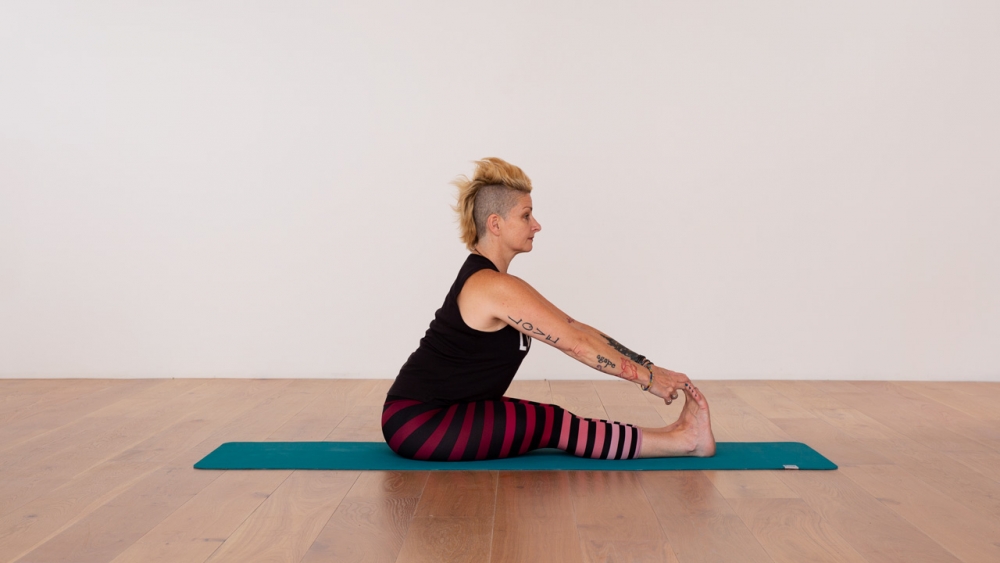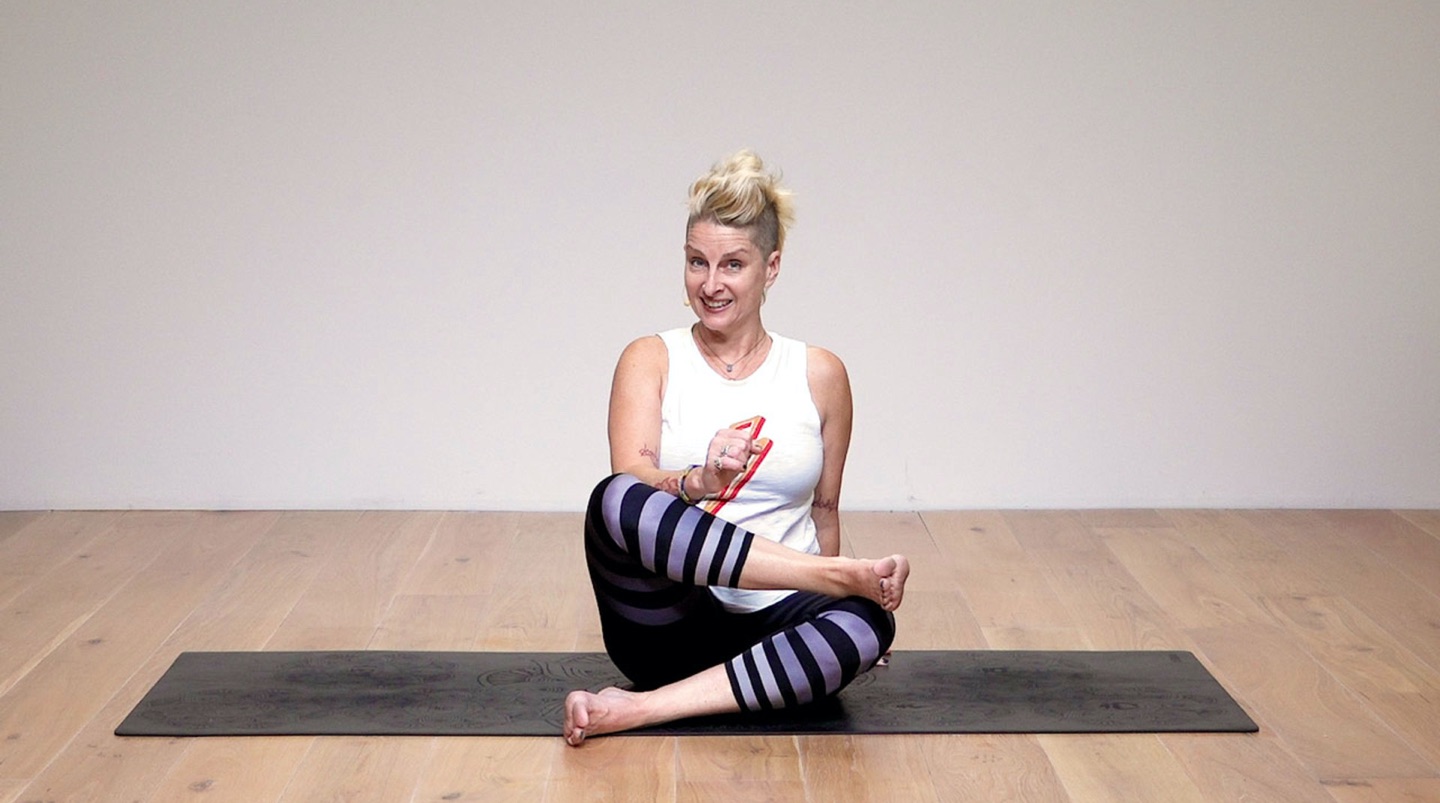Following my article about pandiculation, I thought it would be helpful to describe the other fantastic ways we can stretch our bodies, both on and off the yoga mat. Firstly, it’s useful to define the word:
Stretch (verb)
- (of something soft or elastic) be made or be capable of being made longer or wider without tearing or breaking.
Synonyms: be elastic, stretchy, stretchable, tensile. - straighten or extend one’s body or a part of one’s body to its full length, typically so as to tighten one’s muscles or in order to reach something: “the cat yawned and stretched.”
What are muscles made of?
Our muscles are made up of bundles of fascicles or muscle fibres. Muscle fibres comprise tens of thousands of strands of myofibrils which can contract, relax and lengthen (stretch). Myofibrils comprise millions of bands called sarcomeres. Each sarcomere is made of overlapping filaments called myofilaments. The thick and thin myofilaments are made up of contractile proteins: actin and myosin.
Our brain (via motor nerves from spinal column) tell the actin and myosin when to slide over each other to contract a muscle. Fast-twitch muscles are quick to react but fatigue more quickly – as opposed to slow-twitch muscles which are slow to react but don’t get tired as quickly.
Why is it important to stretch muscles in different ways?
An important concept to take away from this brief explanation: when stretching we want to recruit as many of the smaller units of a muscle: fibres and myofibrils. This kind of multi-faceted stretching is not only beneficial for the nervous system but also offer great physical benefits.
It makes us feel open, free and utterly wonderful. Practiced regularly it can also reduce the risk of injury, alleviating muscle spasms and cramps, tight muscles caused by habitual movement patterns or trauma, and even fascia-related syndromes such as fibromyalgia.
Not only does this kind of multi-faceted stretching feel wonderful, it can alleviate muscle cramps and tightness and even fascia-related syndromes such as fibromyalgia.
We can do this on the yoga mat by practicing the following types of stretching:
Dynamic stretching
In Vinyasa Flow yoga we often practice dynamic stretching – warming up a muscle or a muscle group to go deeper into the stretch. For example, we may lift up and down dynamically in Warrior Two. Our inhalations may take us forward in Low Lunge while our exhalations draw us back into Pyramid Pose.
After a few movements with breath, we may then hold the pose statically, going possibly deeper than if we hadn’t practiced dynamic movement. This ability to go deeper in yoga poses is because we coaxed more and more muscle fibers to join us in the stretch.
Active and Passive static stretching
Static stretching is what we generally do in a Hatha, Iyengar, Bikram or Yin yoga class. Unlike Vinyasa Flow practices where we move dynamically with breath from pose to pose (or dynamically in the pose itself), in a more static stretching class we hold a pose for a period of time.
There are two types of static stretching: Active and Passive.
Active static stretching
– when muscles on one side of the body activate to support the muscles on the other side of the body relaxing.
Passive static stretching
– when we settle into a pose and let gravity take us deeper into the stretch. I like to say, “succumbing to the gravitational pull of middle earth”. Static stretches are held for longer periods of time – again to coax more and more small units to join in the stretch.
Stretch-Contract-Relax (PNF and Pandiculation)
Both Proprioceptive Neuromuscular Facilitated (PNF) stretching and Pandiculation are forms of Stretch-Contract-Relax styles of stretching. PNF uses resistance and a systematic/timed stretch-contract-relax pattern to increase the range of motion, while Pandiculation is spontaneous and all three (stretch-contract-relax) happen at the same time.
Proprioceptive Neuromuscular Facilitated (PNF) Stretching
PNF is a form of stretching more commonly used in private, one-to-one yoga lessons and in therapeutic settings. Key in this style of stretching is resistance – offered by yourself, another human being, or an inanimate object such as a floor or wall.
To practice PNF, find your range of motion in a posture (discovering which muscles are tight and preventing a deeper range of motion). Then isometrically contract those muscles (‘firing’ the muscle without moving it at the joint) against resistance using a 40-60% of your strength for a set amount of time (usually 20-45 seconds). Relax, stretch again then repeat 3-5 times.
Pandiculation
Pandiculation is an inherent bio-feedback loop of the neuromuscular system that allows the muscles to tell the brain how tight they are in order for the brain to do a reset. The pandicular response is often experienced upon waking up after a period of rest. Read more: Pandiculation – Stretching like a cat
Practice Dynamic, Active, Static and PNF in Paschimottanasana
Sit with your legs straight out in front of you. Reach for your toes or use a strap to get closer to your toes. Don’t force your body into the stretch – the idea is to feel into the end of your range of motion; you shouldn’t feel any pain during this practice.
- Dynamic Stretching: Inhale, look at toes and lift/extend through spine. Exhale, hinge at hips and fold deeper. Repeat 3-5 times.
- Active Static Stretching: Activate your shin muscles, quadriceps, abdominal and chest muscles and front of neck so that the whole back body can stretch from heels to top of head.
- Facilitated Stretching (PNF): Yoga teacher gently yet firmly places a hand on the lower back (thick and strong Quadratus Lumborum muscles). You lift up into the offered resistance with 40-60% of your strength for 30 seconds. Then relax deeper into the stretch. Repeat 3-5 times.
- Passive Static Stretching: Relax into the forward fold and let gravity (and your exhalation) take your upper body deeper and deeper towards your lower body.
Have fun exploring the myriad ways we can stretch these incredible bodies of ours!


